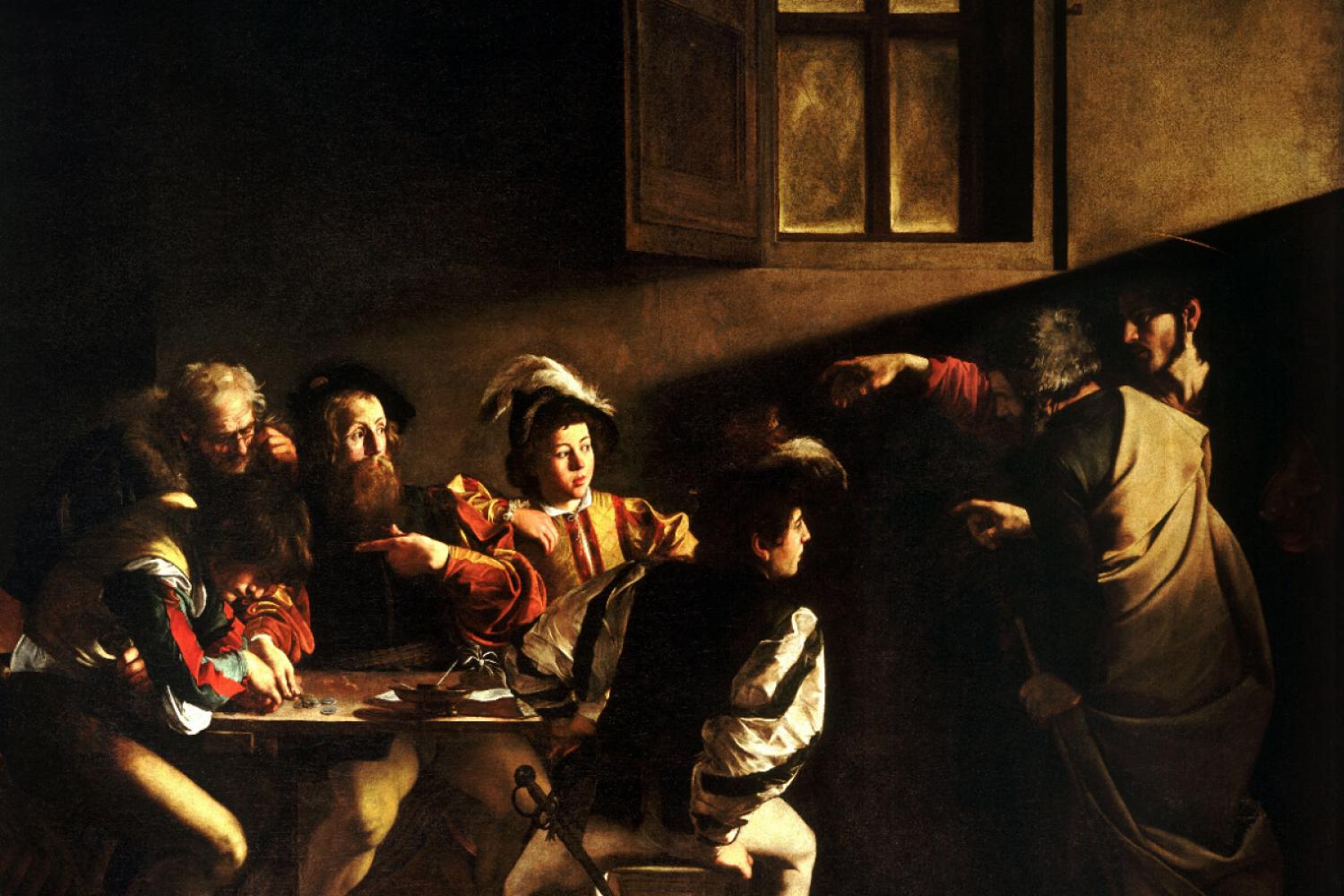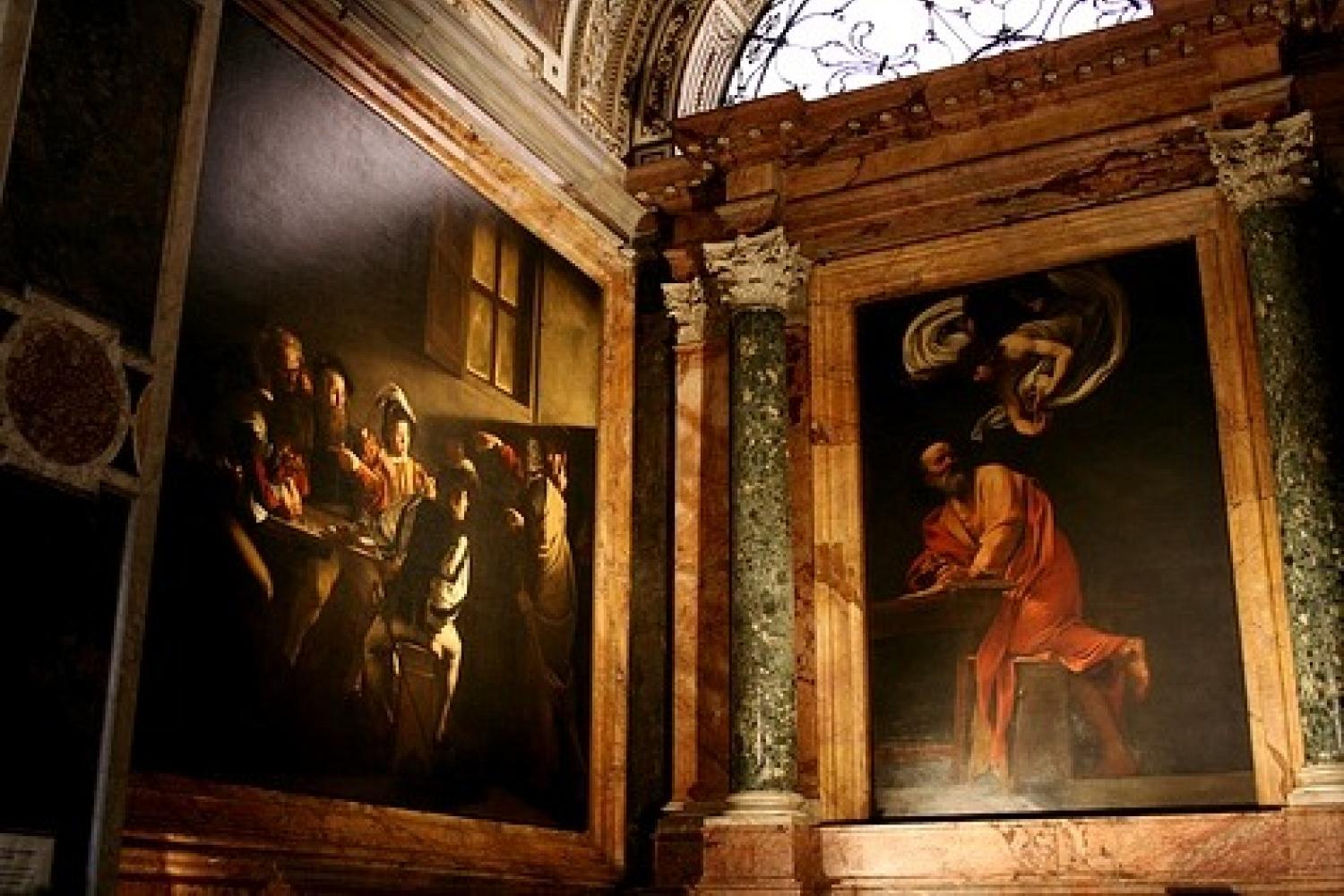
The Contarelli Chapel, a side chapel located in San Luigi dei Francesi, the French national church in Rome, famously displays three works of the painter Caravaggio. Each of the paintings depicts a scene from the life of St. Matthew the Apostle: The Inspiration of Saint Matthew hangs above the altar, with The Calling of Saint Matthew and The Martyrdom of Saint Matthew on the left and right side of the altar, respectively.
Michelangelo Merisi da Caravaggio, a Milanese-born painter living at the turn of the seventeenth century, is most often associated with the city of Rome. Among his most famous works – all of which display his characteristic chiaroscuro style that utilizes stark contrasts between dark and light to bring scenes to life – are The Crucifixion of Saint Peter (1601), The Conversion on the Way to Damascus (1601), and The Beheading of Saint John the Baptist (1608).
The Calling of Saint Matthew depicts the moment Christ invited St. Matthew to give up his life as a tax collector in order to follow him. In his gospel, Matthew recounts the scene simply: “As Jesus passed on from there, he saw a man called Matthew sitting at the tax office; and he said to him, “Follow me.” And he rose and followed him” (Matthew 9:9). In the painting, Christ and St. Peter stand in a room with five men seated at a table counting coins.
Christ and St. Peter stand on the right of the painting. While Peter’s back is turned to the viewer and his attention is fixed on Christ, Christ looks upon the five men at the table. Christ’s hand is raised, pointing at Matthew. It has been noted that Christ’s hand is strikingly similar to that of Adam in Michelangelo’s The Creation of Adam in the Sistine Chapel, echoing the tradition of viewing Christ as the “new Adam.”
St. Matthew's identity in the scene has been a matter of debate. One man, bearded and sitting in the center of the table, meets Christ’s gaze and points inwardly, apparently at himself. This man appears to be the same man as is depicted in the other paintings in the chapel. Others have argued that the bearded man’s finger appears to point at a younger man at the end of the table, either indicating that this younger man is Matthew or attempting to deflect attention from himself. The young man looks down at the coins, still not having met Christ’s gaze. Still others have questioned whether the ambiguity itself is an intentional feature of the painting.
The scene utilizes a single source of light shining into the dark room from behind Christ, aligning intentionally with the small window that serves as the Contarelli Chapel’s sole source of natural light. The light aligns with Christ’s gaze and his outstretched hand, all pointing at the men in the dark room. The room, a den of greed only moments before, is filled with the light of Christ, and “the darkness has not overcome it.”

The First Draught
To receive the Weekly Update in your inbox every week, along with our weekly Lectio Brevis providing insights into upcoming Mass readings, subscribe to The First Draught.
